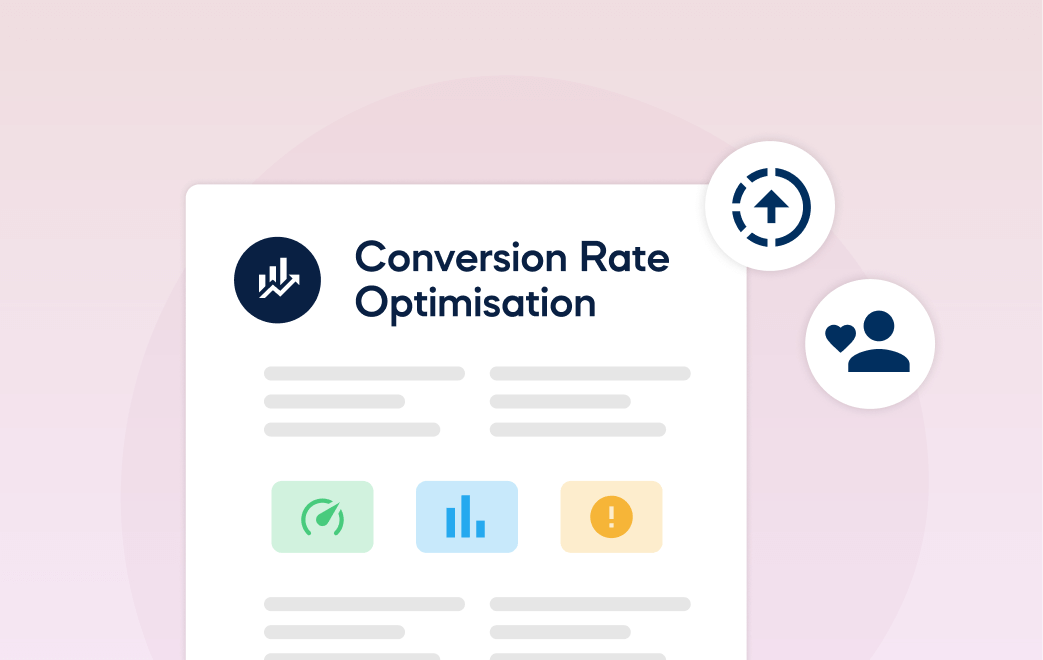
In this article, we discuss what Conversion Rate Optimisation is and why it’s a crucial part of digital marketing.

In the competitive world of digital marketing, driving meaningful engagement and achieving business goals often hinges on a single metric: conversion rate. Conversion Rate Optimisation (CRO) is a data-driven process that enables businesses to maximise the value of their website traffic.
By understanding user behaviour, testing changes, and refining strategies, CRO ensures that more visitors take desired actions, from making purchases to signing up for services. This article explores the essentials of CRO, its differences from broader Conversion Optimisation (CO), and practical steps to begin and enhance your CRO journey.
Conversion Rate Optimisation (CRO) is the art of fine-tuning your website by running experiments and analysing user behaviour to get more visitors to take the actions you want them to take. Actions can include buying products, signing up for services, booking an appointment or just clicking around and staying engaged.
It’s a key factor in driving website conversions, increasing the efficiency of these conversions and making existing website traffic more valuable to a business.
CRO involves experimentation – also known as A/B testing, personalisation and analytics to improve measurable performance on the website.
CRO and Conversion Optimisation (CO) are in fact very similar. CRO is data driven, focussing on optimising the percentage of users who take a specific action on a website whereas CO focuses on improving the process of turning website visitors into customers.
CO strategies include improving the user journey, refining messaging across your site or behavioural analysis to identify areas of improvement. CO isn’t just about getting more customers, it’s about improving their experience with your website. CRO is considered a subcategory of CO, it’s the action aspect of Conversion Optimisation.
Most businesses will begin their CRO journey when the website is underperforming, or when they are not receiving their desired number of new business enquiries. In your case, the first thing is to understand what your website’s purpose is to you and to your audience. This could be increasing new clients, gaining more value and loyalty from existing clients, to raise awareness of a new product or service or to provide vital information at a critical time.
Next, identify what isn’t working. If it’s easy to identify, you’re ready to start exploring CRO tools such as the ones we recommend below. If you’re not sure what’s not working, we recommend investing in user behaviour tracking and feedback/survey tools to identify the pain points of your website with visitors.
There are several tools which can support a business with CRO. Whether you’re just starting out on your journey or are looking to improve on the existing CRO you deliver, Filter recommends 4 basic tools which are an absolute must for any organisation delivering CRO:
Combining these tools, you can effectively analyse user behaviour across your site, experiment with desired improvements and maximise conversion rates. Other benefits include decreased acquisition cost, increased revenue and better ROI, better user experience, increased sales and a competitive advantage.

Ready to turn more visitors into loyal customers? At Filter, we specialise in fine-tuning WordPress websites to drive measurable results. Whether it’s crafting high-converting landing pages, running A/B tests, or implementing cutting-edge personalisation with our exclusive PersonalizeWP plugin, we have the tools and expertise to optimise your site.
User behaviour tracking and feedback/survey tools will give you real-life insight into how your users are interacting with your existing site, to help identify areas of improvement. Don’t be afraid of the results. CO and CRO aren’t just about getting more customers, they are important strategies to improve the experience of your website so getting real-life feedback is vitally important.
Each experiment needs to have a hypothesis, a subsequent action, a metric and an audience. The hypothesis acts as the goal, the action is what you are going to change in the experiment to achieve that goal and a metric is then how you are going to monitor this to mark the experiment as a success.
Metrics, or KPIs, are used to measure the campaign’s success. They allow you to measure specific actions or events on the website, providing valuable insights into visitor behaviour and campaign performance.
Once you’ve generated your hypothesis and action for an experiment, the next thing to do is decide whether you want to run a simple A/B test, multivariate test or a multi-armed bandit test. Then, depending on which experimentation tool you choose, the world is your oyster.
Here are some examples of experiments that Filter have created for our clients:
If you’re a seasoned CRO-er and want to take things up a notch, our first recommendation would be to check you are using the tools suggested above – if yes, jump to the paragraph below for additional tools you can use to improve your CRO. If you only have a selection of the tools mentioned above, we recommend exploring the other tools first to further understand your existing CRO programme.
Other types of tools you can use include funnel and form optimisation, such as VWO Insights or Unbounce, customer journey mapping to fully plot out the journeys, feedback and surveys like Userfeel, Told and Survey Monkey and website speed and performance optimisation like Google Pagespeed Insights. Adding these to your toolkit will open up new experimentation opportunities.
Conversion Rate Optimisation is a powerful tool for businesses looking to maximise their digital presence and drive tangible results. By leveraging analytics, user behaviour tracking, and experimentation, companies can turn their websites into highly effective platforms for engagement and conversion.
Whether you’re starting with basic CRO tools or aiming to elevate an existing strategy with advanced techniques, the opportunities for growth are vast. With a focus on improving user experience and achieving measurable goals, CRO not only increases revenue but also creates a competitive edge in today’s digital landscape.